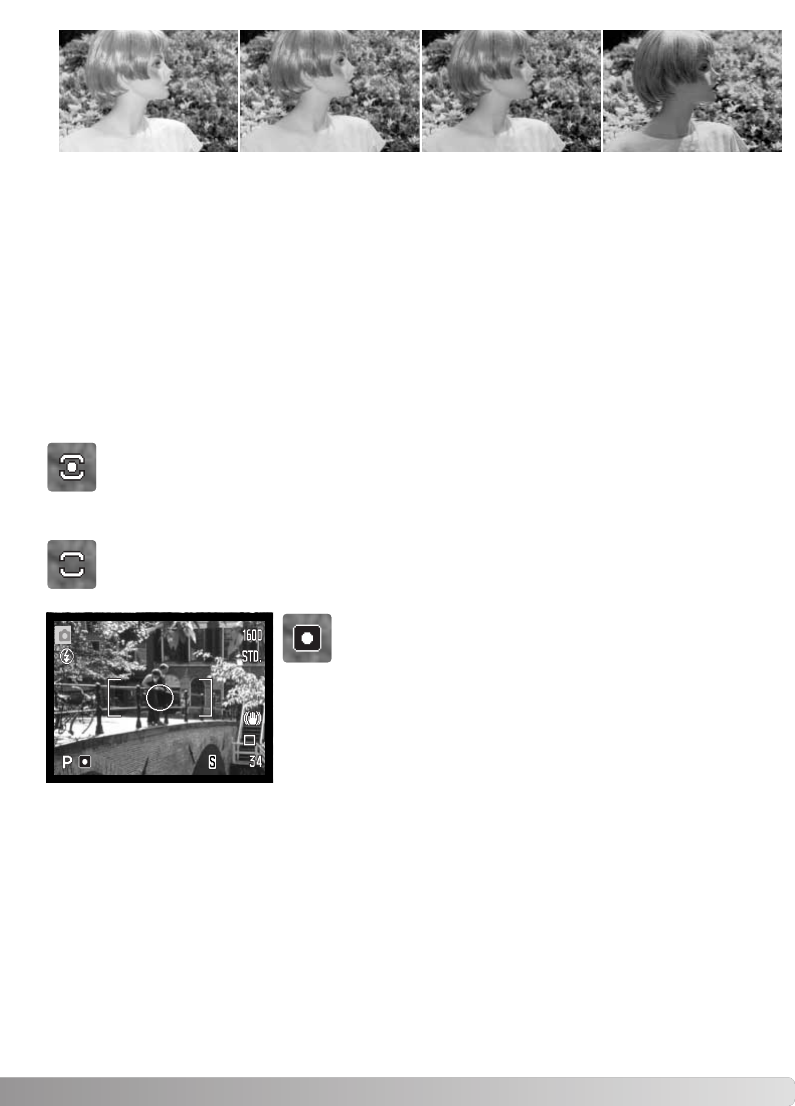
61
Flash compensation changes the ratio between the ambient and flash exposures. When using fill-
flash to reduce harsh shadows caused by direct sunlight, flash compensation changes the ratio
between the highlights and shadows. The flash affects the darkness of the shadows without affect-
ing the area illuminated by the sun. By decreasing the flash output with a negative Ev setting, the
shadows receive less light and are deeper, but retain detail that would be lost without the flash.
Using a positive Ev setting will soften or eliminate shadows.
Center weighted: a traditional metering method in film cameras. The system measures light
values over the entire image area with emphasis given the central region.
Spot metering: uses a small area within the image to calcu-
late the exposure. A small circle appears in the middle of the
live image indicating the measuring area. The spot allows
precise exposure measurements of a particular object with-
out being influenced by extremely bright or dark areas within
the scene.
Multi-segment metering: uses 256 segments to measure luminance and color. This data is
combined with distance information to calculate the camera exposure. This advanced meter-
ing system will give accurate worry-free exposures in almost all situations.
Metering mode indicators are displayed on the monitor. The metering mode is set in section 2 of the
P, A, S, and M menus (p. 44).
Metering modes
No compensation
Negative compensation
Positive compensation
No flash


















